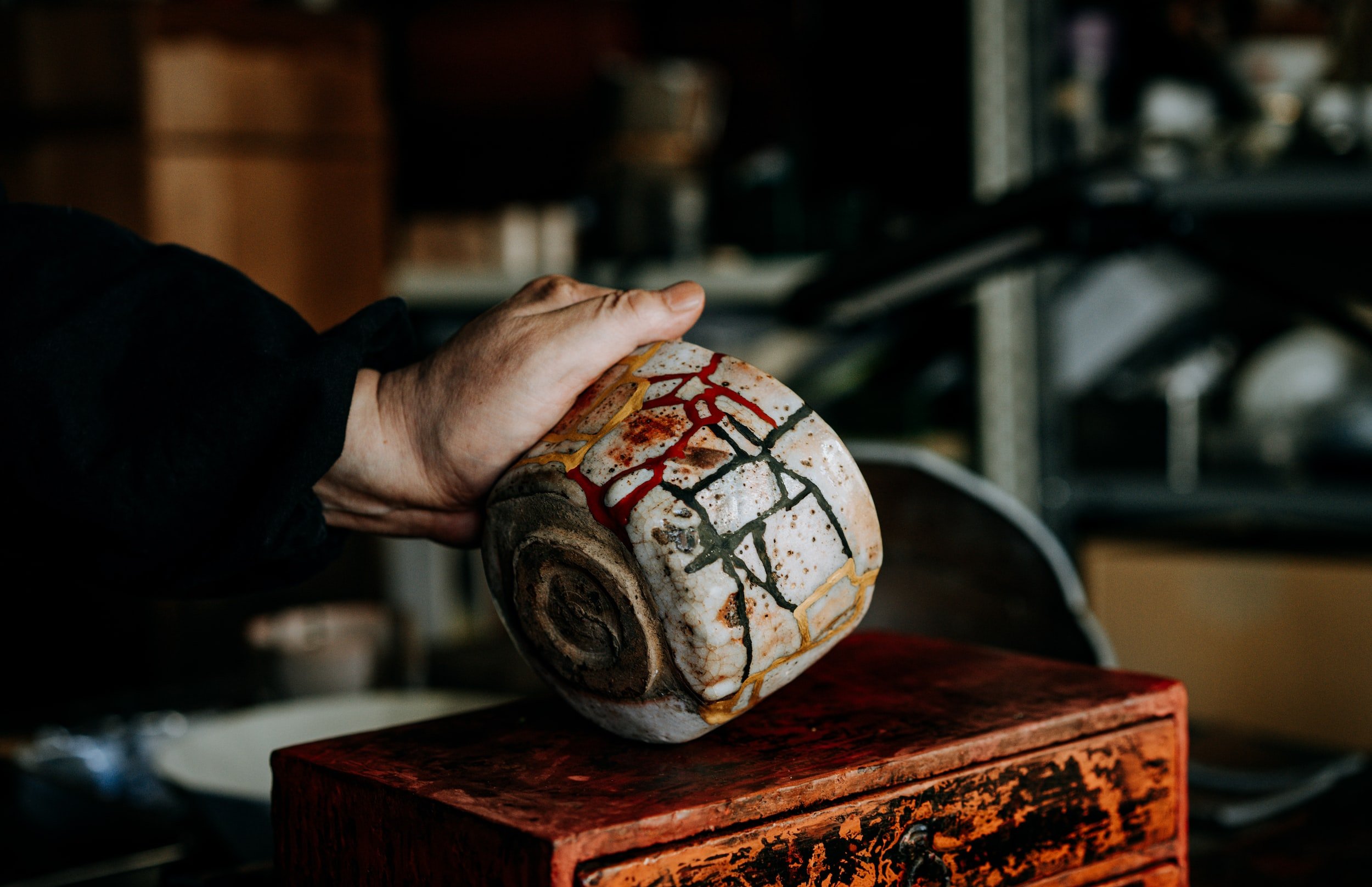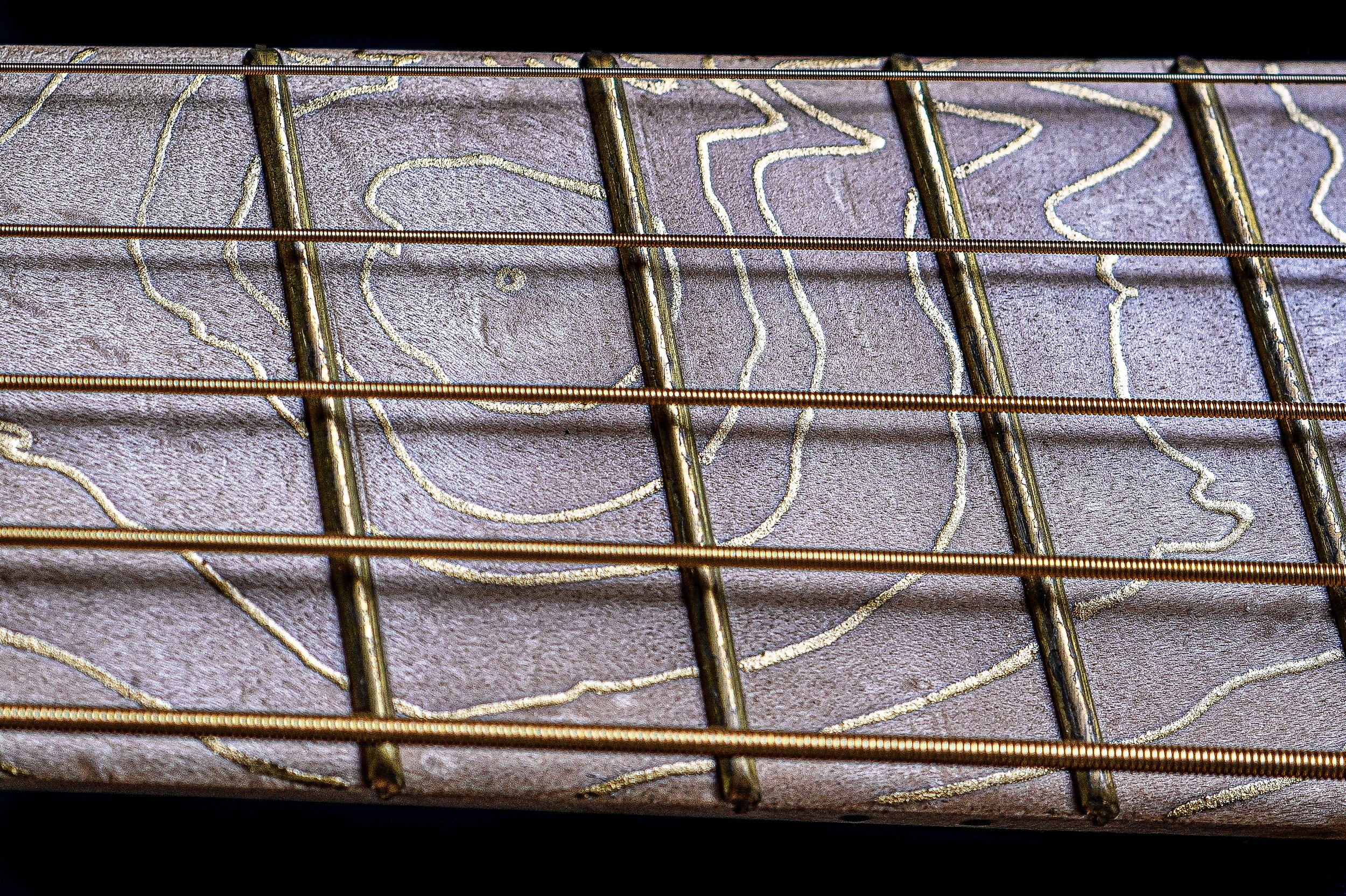The Art of Kintsugi
Kintsugi is a Japanese traditional repair technique that is said to appear around the 15th century. It is part of the greater lacquer art that japanese artisans have mastered over the centuries, and is mostly famous for its use in ceramic repair. Its main goal is to repair broken ceramic objects or highlight natural imperfections in wooden objects. While most repair techniques aim at hiding the damaged area perfectly, Kintsugi’s philosophy is to embrace the damaged object's flaws rather than conceal them. It takes into account the object's past, its history, and therefore any accidents it may have experienced.
The breakage of a ceramic no longer means its end or its disposal, but a renewal, the beginning of another cycle, and a continuity in its use. It is therefore not a question of hiding the repairs, but of highlighting them.
Kintsugi is often seen as a metaphor for the way that we should approach life and the idea that our experiences and hardships can make us stronger and more beautiful. Instead of trying to cover up or dismiss our faults, kintsugi teaches us to welcome them as catalysts for change and improvement.
The process of kintsugi involves carefully repairing the broken pieces of pottery, using a special lacquer called Urushi, which is extracted from an endemic tree of the Japanese Islands, and the precious metal of choice. The mended item is polished and finished to create a one-of-a-kind item that is infused with the history and personality of its past.
In the recent years, kintsugi has become more well-known as a method of repair and restoration in a variety of contexts and as a way to appreciate the flaws and individuality of an object. Whether it is used to repair a broken vase or wooden furniture, kintsugi is a powerful reminder of the resilience and beauty that can be found in the cracks and imperfections of life.
Here at Belforti Instruments, we started using Kintsugi for many reasons, the main one being a long-term admiration for the delicate Japanese arts. The way we use Kintsugi is a little bit different than how it was originally intended, and we are deeply aware that it would probably not be recognized as such by the masters themselves. But we’re not going to intentionally break or crack our precious tonewoods for the sake of repairing them this way, aren’t we ?
We use this method mostly for its decorative aspect while still using all the original and sourced materials, from the lacquer to the metal powders and women's hair brushes (no ladies were harmed during this process). We try to stay as true to the original concept as possible, but twist it a little bit to better suit our guitar-building constraints.
If you’re dreaming of something different, and unique for your custom guitar, check out our customization options, or order your new Belforti with one of our outstanding finishes !
And for my fellow french citizens who would like to experience themselves this form of art, we highly recommend getting in touch with Nicolas Pinon, as he provides an amazing introduction course for beginners and repair professionals !


